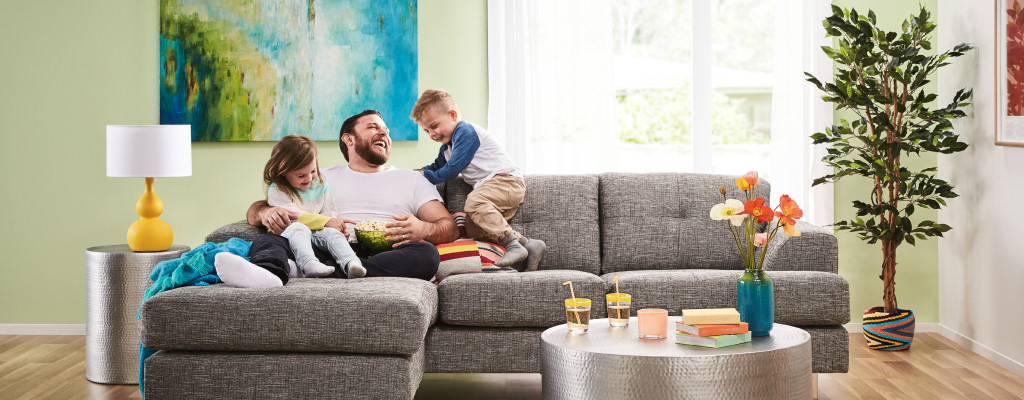When in the middle of a sweltering summer, few things are quite as valuable as a good air conditioner. However, air conditioners aren’t necessarily the most intuitive appliances, which means that many homeowners don’t fully understand how they work. This can become a big problem when it comes to shopping for a new air conditioner, because if you don’t understand how the system works, then it will be difficult to tell the difference between models and ultimately pick the best option. It can also be a big obstacle when it comes to troubleshooting problems in older units, since understanding the basics is critical to figuring out the location and severity of your issue. To help you get a better handle on how air conditioning works in general, here is a simplified introduction:
What is air conditioning?
For most homeowners, the idea of air conditioning can seem abstract: flip a switch, hear the external unit start to blow, and then enjoy a nice cool breeze coming through the vent covers in each room. The majority of the work happens behind the scenes, which is one of the biggest reasons many homeowners don’t understand how their air conditioners work and are therefore unable to properly diagnose and fix any potential problems.
However, central air conditioners (the most common type of AC) are not all that difficult to figure out once you have the basics down. There are two main components of the system: the ventilation and the bulky box on the outside of your home (which houses compressors and condensers). The ventilation is responsible for moving cold air throughout your home, but the compressors and condensers are where the magic happens.
What happens inside your AC?
In short, a special substance is used inside the air conditioner. This substance can change from a gas to a liquid and back to a gas fairly easily. These transitions require the addition or subtraction of some energy, with a liquid-gas change requiring the addition of energy to the substance and a gas-liquid change requiring the subtraction of energy. This whole process is just used to move energy from one place to another. In the case of air conditioning, the loop is just moving the heat from the inside of your home and dumping it outside over and over and over again.
What is the net result of air conditioning?
As it turns out, this whole process creates heat, which means that turning on your air conditioner results in a net increase in temperature. Of course, this is nullified by the fact that all of the excess heat is dumped outside your home, but it can become a serious issue if you are using a space air conditioner. Space ACs needed to be properly configured so that the waste heat of the system is properly transported to the outside of your home. If it isn’t, then your home will get hotter instead of colder, all while still costing you a pretty penny in electricity.
Through this same reasoning, it’s usually a bad idea to open up your fridge for a long period of time in an effort to cool down your home. While it may feel colder for a few minutes, your fridge will use up energy to return the internal temperature of the fridge back to its original levels. This will result in excess heat that will make your home even hotter than it was before.
What are the different types of air conditioners?
1) Basic central air conditioners require a ventilation system to get the job done. They are expensive to install and take up a substantial amount of space, but they also tend to be the most efficient option in most circumstances.
2) Space air conditioners, which are portable and easy to move around, often come at a cost of efficiency and coverage. While you may pay less in labor and money to set up a space AC, it will likely cost you a lot more in the long run due to its reduced output, increased energy consumption, and lower effective cooling area. You may end up needing to get several space air conditioners to cover the same area a basic central air conditioner could cover.
3) Window air conditioners are somewhere between the prior two options. While window ACs are only good for cooling a room or two at most, they are fairly simple and cheap to install. As long as you have a small window that is available for use, you can set up a window AC in a matter of minutes. Their unique location allows them to dump heat immediately outside your home, which makes them fairly efficient.
4) Through-the-wall air conditioners, which are pretty much window AC’s for when you don’t have a window handy. To install a through-the-wall unit, you will likely need to remove part of a wall. This does mean higher upfront costs, but it can be a viable alternative if you have no available windows that you want to fill with an air conditioner.
5) Evaporative air conditioners, also commonly known as swamp coolers, are more interesting than the other options since they operate by manipulating the humidity in your home. By simultaneously introducing moisture and lowering the temperature, they can create a pleasant cooling effect. However, they are only useful in areas that are extremely dry and hot, which makes them best suited to deserts. If you live somewhere that is already humid and hot, then the cooling effects of an evaporative AC will be limited.
What is the best option for you?
Everyone’s situation is different, so what works for your neighbor might not work for you. The key is to do your research on all of your options and pick an air conditioner that you will be able to handle. You’ll need to consider how much it will cost you to install an air conditioner (in time, money, and labor), how much it will cost to run, and how much of your house will be covered, as well as how easy it will be to maintain that air conditioner and how long you expect it last.


Comments are closed